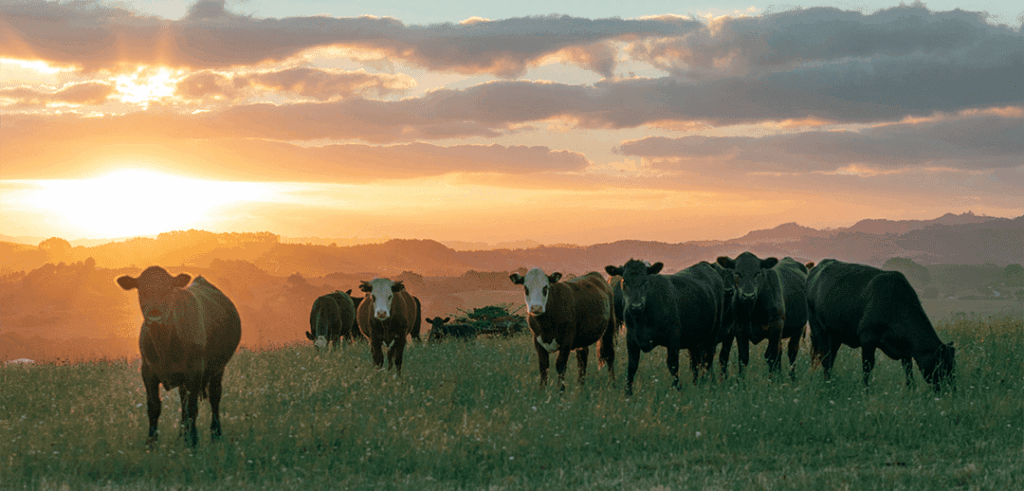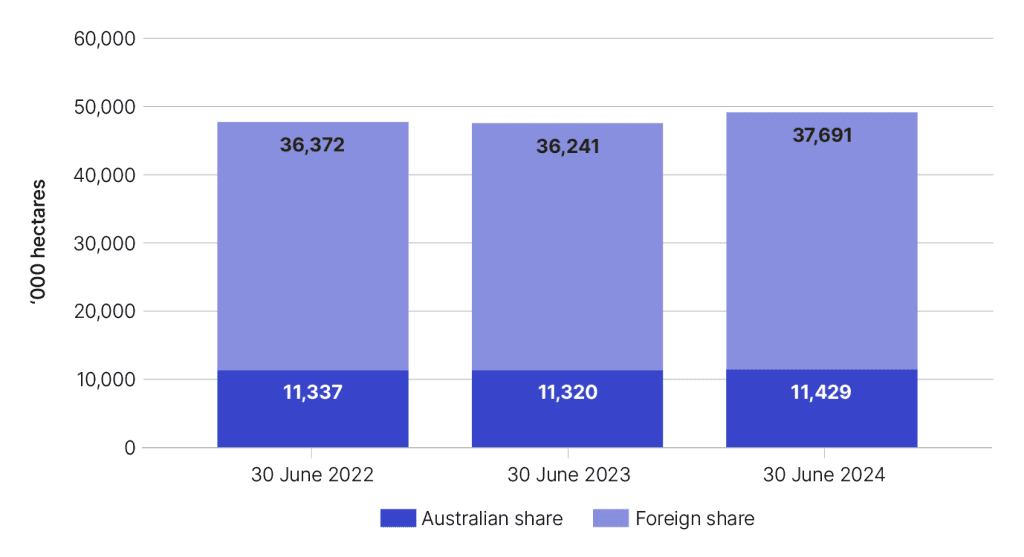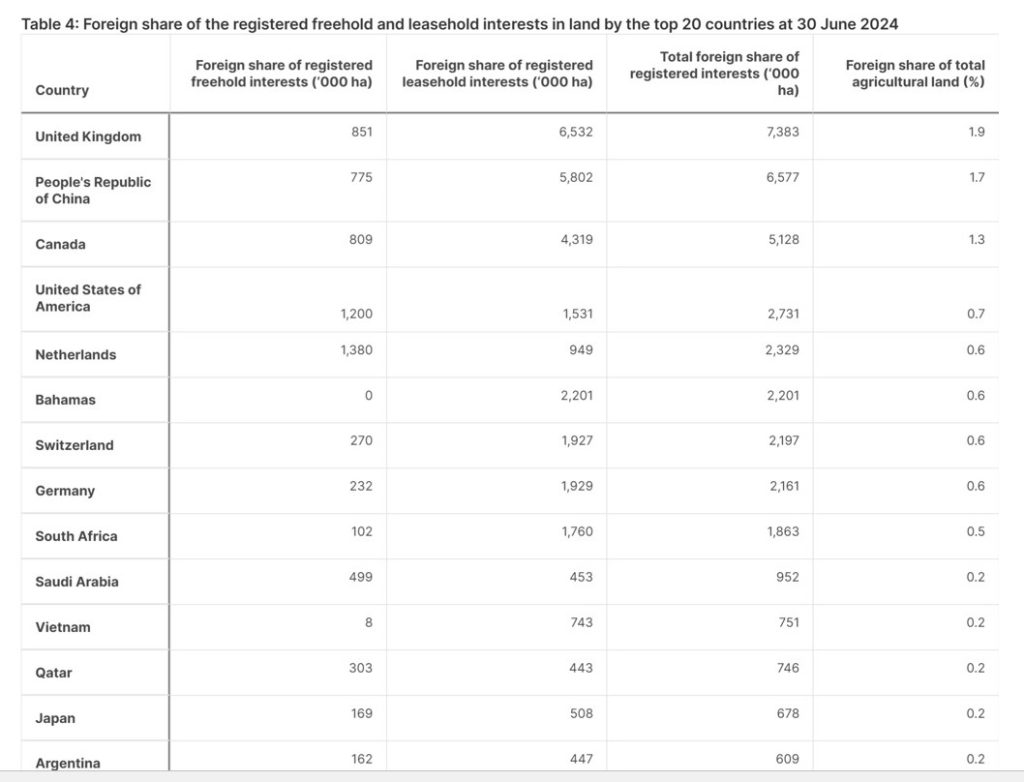
THE area of foreign-owned agricultural land in Australia has grown by 3.3 percent over the 12 months ended 30 June 2024, latest data generated by the Australian Taxation Office shows.
The report, covering the 12 months to 30 June 2024, is based on mandatory registrations from the ATO’s Register of Foreign Ownership of Australian Assets.
The total area of agricultural land in Australia with some level* of foreign ownership increased from 47.561 million ha at June 2023 to 49.12m ha by June 2024. That’s a rise of 1.6 million hectares, or 3.3pc.
Using the ABS 2020–21 Agricultural Census measure of agricultural land in Australia, the overall proportion of agricultural land with a level of foreign ownership was 12.7pc at the end of June 2024, compared to 12.3pc a year earlier.
Beef Central will publish a more comprehensive item from the report on Wednesday evening, as part of our weekly property coverage.
Definitions of ‘foreign owned’ have a big bearing on the results, and are open to interpretation. Many assets include both Australian and foreign equity. * For example the Register records land held by foreign person entities that have a foreign ownership share of as low as 20 percent – not necessarily outright ownership.
Foreign owners by origin
The countries with the largest share of Australian agricultural land have changed little in recent years, with the United Kingdom ranking number one, accounting for 7.383m ha or 1.9pc of total (freehold and leasehold) agricultural land. Major UK investors include AA Co’s majority shareholder Joe Lewis and Consolidated Pastoral Co’s principal shareholder Guy Hands.
Next on the list is the People’s Republic of China, accounting for 6.57m ha (1.7pc of total agricultural land); Canada with 5.12m ha (1.3pc); the United States with 2.73m ha (0.7pc) and the Netherlands and the tax haven of the Bahamas, both accounting for 0.6pc of agricultural land.
Foreign entities from a total of 73 countries held registered interests in Australian agricultural land at the end of June.
Click on image for a larger view
State breakdown
The level of foreign ownership recorded in the year to June 2024 varied widely from region to region.
In the Northern Territory, 27.6pc of agricultural land (2.67m ha) was held by foreign interests. Next largest was Tasmania with 23.9pc (1.5m ha), followed by WA 13.3pc (11.5m ha); Queensland 134m ha (11.9pc); South Australia 46m ha (7pc); and Victoria 11.3m ha 5.9pc.
Click on image for a larger view
Foreign and Australian share of registered interests
The graph below shows the foreign share and Australian share of registered interests in agricultural land at 30 June each year from 2022 to 2024.
As the Register records land held by foreign person entities that have a foreign ownership share of 20pc or more, this means there may also be a significant portion of Australian ownership in those same parcels of land.
Of the 49.12m ha of registered interests in Australian agricultural land, 23.3pc (11.42m ha) was indirectly held by Australian investors who have shares in entities considered foreign persons.

About the Foreign Ownership of Land Register
The Register is a live dataset of self-registrations of foreign-owned assets used for agricultural purposes. Registrations of interests in agricultural land include interests registered through a stocktake in 2015, which were converted from the Register of Foreign Ownership of Agricultural Land into the current Register, and continued to be held by the foreign person at June 2024.
The definition of agricultural land under the Foreign Acquisitions and Takeovers Act 1975 includes ‘land in Australia that is used, or that could reasonably be used, for primary production purposes’ with some minor exemptions.
Registrations of agricultural land include:
freehold interests
leasehold interests, or
the right to occupy agricultural land under a lease or licence that is likely to exceed 5 years.
A foreign person may acquire the interest alone, as a tenant in common, or as a joint tenant.
Under Australian law, foreign entities must register their agricultural land interest within 30 days of purchasing agricultural land (settlement), or becoming a foreign person while holding an interest in agricultural land.
The Australian Bureau of Statistics 2020–2021 Agricultural Census was used as the benchmark for calculating the foreign-owned proportion of agricultural land at 30 June 2024.
Care should be taken when comparing trends in the percentage of foreign ownership of agricultural land across years.
There are two measures of agricultural land: the Agricultural Census conducted every five years, and the Rural Environment and Agricultural Commodities Survey (REACS) conducted each year between the Agricultural Census.
In earlier reports of registrations of foreign ownership of agricultural land, the ATO used the most current measure at the time of publication. However, as part of the ABS’s Agricultural Statistics Modernisation Program, neither the Census nor REACS will be continued, and the ABS has advised the best measure to use for comparison purposes is the 2020–21 Agricultural Census.
Statistics on agricultural land in the report are presented by reference to land size. Registrants are required to enter the area of their land holding in metres squared (m2), which is then converted to hectares for reporting purposes.
Due to the broad definition of agricultural land, it is possible the Register includes land not captured as part of the ABS Agricultural Census. This may have the effect of overstating the total proportion of Australian agricultural land with a level of foreign ownership.
Entities whose primary business is forestry are not captured by the ABS Agricultural Census data used for comparative purposes in this report. In states or territories that have a large proportion of forestry, the proportion of agricultural land that has a level of foreign ownership is therefore likely overstated. As of June 2024, land use attributed to forestry on the Register was 1.488m ha, representing 0.4pc of the 2020–2021 Agricultural Census.



